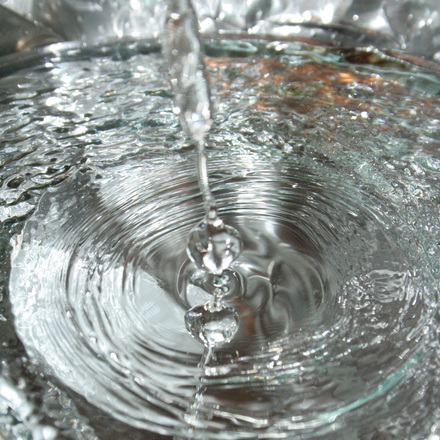With more than 30 years’ experience in the residential and commercial water treatment industry, Mark Nelson is a Class 1 Drinking-Water Operator and a CBWA (Canadian Bottled Water Association) Certified Plant Operator. As founder and president of Nelson Water in Ottawa, Mark focuses on dealing with challenging water treatment system designs for problem water. He also heads the largest water bottling plant in the city of Ottawa with a delivery network throughout the Valley.
There is no doubt that water is indispensable for all living things on planet Earth. There is also no doubt that we will soon have to face the reality that we may not have enough potable water to go around. This is NOT SCIENCE FICTION. Although two thirds of the Earth’s surface is covered by water, only less than 1% of the 326 million trillion gallons is usable. Additionally, some areas have an abundance of freshwater (like Canada) while others lack adequate amounts (like the U.S.). With ongoing droughts, it has become even more pressing for many parts of the world, to consider alternative methods of reusing and conserving water supplies.
Many Canadians are aware of basic water conservation methods such as not running faucets when brushing teeth, using water efficient toilets, opting for showers rather than baths and avoiding using wasteful sprinkler systems, but unfortunately these measures may not be sufficient to ensure that everyone around the glove has access to adequate supplies of potable water throughout the whole year.
How to Make Potable Water From Wastewater
According to a 2014 published Water Technology article, it may be possible to use recycled wastewater to address the needs of the existing water crisis. Many overlook that wastewater may provide an excellent source of almost 100% reuse. Some water limited regions down in the lower U.S. have recognized this potential, with Southern California leading the innovation for large-scale projects including converting wastewater into potable drinking water.
Currently, there are technologies for potable reuse, which are more far-reaching than conventional water treatments. While these processes begin with wastewater, they can ultimately process and produce a higher quality drinking water compared to the conventional treatment plant that begins with a “clean” surface water supply.
These processes use multiple treatment protocols to effectively remove all chemical and microbial contaminants. This includes both bio-chemicals and industrial contaminants and is a vast improvement over conventional water treatment plants, which are unable to offer this level of water filtration.
Could Wastewater Truly Provide a Viable Option, or this Science Fantasy?
The chief inhibitor with wastewater is that it typically contains phosphorous nutrients, nitrogen, biosolids used in the agricultural industry. There is also the potential that it can contain grease and oils. There is an understandable stigma, among consumers, that wastewater would neither be palatable or safe. This is more of a psychological barrier than a scientific one. Technology is available NOW which can convert even highly contaminated wastewater into a high-quality safe drinking water.
In order to effectively implement this type of technology, it will be necessary to overcome the emotional stigma and perception of consuming recycled wastewater. The public will need to be educated as to the reliability and safety these industrial, large scale filtering processes. Once this perceptual barrier is overcome, it could very well become a viable option.
As more and more consumers are becoming aware of the potential contaminants contained in tap water, domestic water filtration devices are showcasing the rapid developments within the industry. After all, if it is possible to remove harmful contaminants and bacteria with an under sink device like and R.O., the possibility of recycling wastewater should become an even more tempting reality and a viable option for future water conservation.

